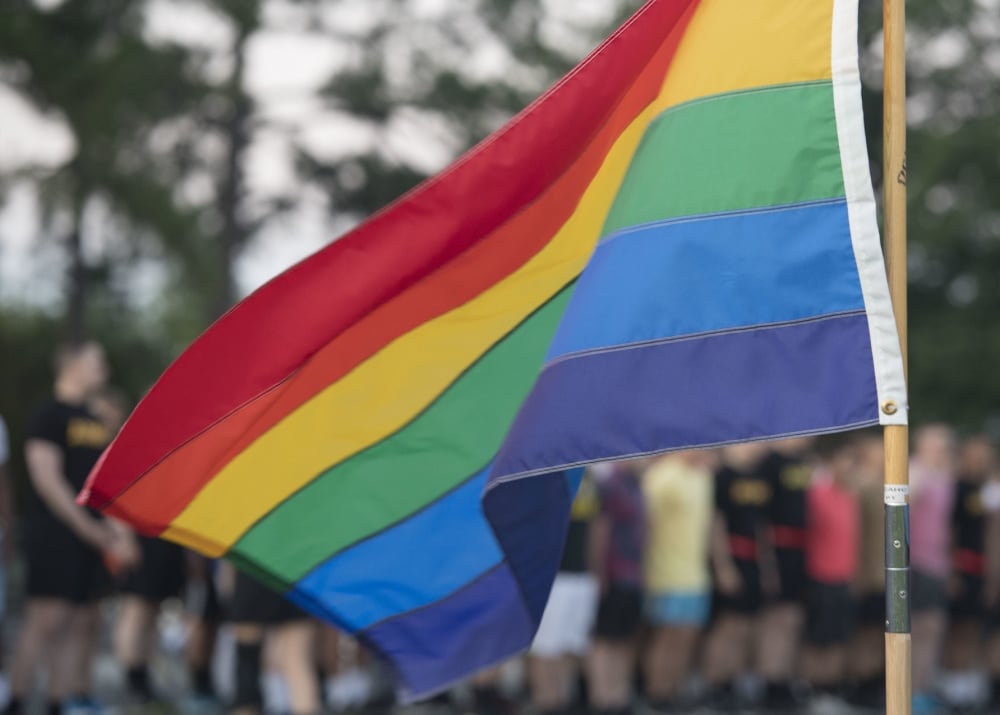The Navy's body size rules are outdated and unattainable for many, officials say, and the service is on its way to coming up with new ones.
Late last year, the Office of the Chief of Naval Personnel's office revealed that officials are announced that it was looking into a possible updating eto the height-and-weight chart and the tape test, as well as servicewide ways to encourage and reward outstanding performance on the semi-annual physical fitness assessment.
Roughly one-third of the Navy personnel are heavier than the approved height-and-weight standards and must be tapedbody composition test as is, a senior Navy official told Navy Times on Jan. 27.
"If a third of the force doesn't meet the published height and weight standards, then the accuracy of these charts today needs to be and should be looked at," said the senior official, who asked not to be identified because he wasn't authorized to discuss the subject publicly. "We know that over time, the size and shape of the population has changed, so it makes sense to at least re-evaluate our baseline to ensure it is still valid."
Two weeks earlier, Chief of Naval Personnel Vice Adm. Bill Moran confirmed to Navy Times that he's poised to brief his told reporters at the annual Surface Navy Association Symposium that his office was poised to brief his recommendations to Juan Garcia, the assistant secretary of the Navy for manpower and reserve affairs, followed by Navy Secretary Ray Mabus in early February.
"The BCA, as we understand it, is based on decades-old data," Moran said at a public appearance in February, and the height and weight chart hasn't changed in roughly as far back as 30 years, he said.
With fitness trends like weight lifting, and the increased numbers of women in the Navy, it's important to study how body shapestyles have changed over time, he said.
Currently, male sailors age 40 or younger are allowed 22 percent body fat; older men are allowed 23 percent. For women, limits are 33 percent under age 40, and 34 percent for the rest. That's slightly lower than what the Department of Defense allows — 26 percent for men, 36 percent for women, suggesting it could be within the Navy's prerogative to ease the standards to match those of DoD. Another option would allow higher body fat percentages as sailors get older.
Navy statistics released in to Navy Times in 2013 show that during the spring 2013 physical fitness testing cycle, 109,902 sailors, or 30.2 percent of the force, didn't meet the Navy's height and weight chart standards and had to be taped.
Of those, 7,792 ultimately failed the tape test, for a failure rate of about 7.1 percent for everyone who had to be taped.
Moran is no fan of the height-and-weight standards and is a force in getting them changed. himself struggles with making weight, he told Navy Times in a Feb. 2014 interview.
"... I will tell you, every weigh-in, I am down to the ounce, just because of the way I am built," Moran said in a spring 2014 interview with Navy Times.
There might also be changes to hope for the end of the tape test, which measures sailors' neck girth in proportion to their waists. Many say the body composition assessment is unfair or too subjective; sailors must pass this and the PRT or they'll fail the cycle. Three failures in four years will get sailors booted out. Dozens of readers have suggested to Navy Times that calipers or a body mass index scale are preferable. calipers or a water displacement test would be more accurate.
"Bioelectric impedance, which is available in nearly all scales, could be used as a replacement at no, or reduced, cost," wrote Lt. (Dr.) Mark Hauswirth, a Navy flight surgeon, in a January letter to the editor. "Its accuracy is at least comparable, and it has no bias as it does not introduce human error."
Some senior officials agree it's long past time for a change.
"It's amazing to me that with all the leaps in technology that have happened over the past few decades in ships and weapons and aircraft, that we are still testing for body fat the same way we did when I came in the service in the 1980's," the senior official said.
In addition to new body composition standards, CNP is also looking at standardized incentives for PT studs.
The Navy's Physical Readiness Program Director Bill Moore told Navy Times in 2014 that skipperscommanding officers have a hostlist of incentives — from special mention in the plan of the day to prime parking spots to special liberty — they can give to sailors who score an excellent on the PFA, but they are at each command's discretion.
CNP spokeswoman Lt. Stephanie Homick confirmed that her office was looking into more ways to reward consistently high performers, but declined to go into more details before the proposals are briefed to leadership.
Mark D. Faram is a former reporter for Navy Times. He was a senior writer covering personnel, cultural and historical issues. A nine-year active duty Navy veteran, Faram served from 1978 to 1987 as a Navy Diver and photographer.
Meghann Myers is the Pentagon bureau chief at Military Times. She covers operations, policy, personnel, leadership and other issues affecting service members.





